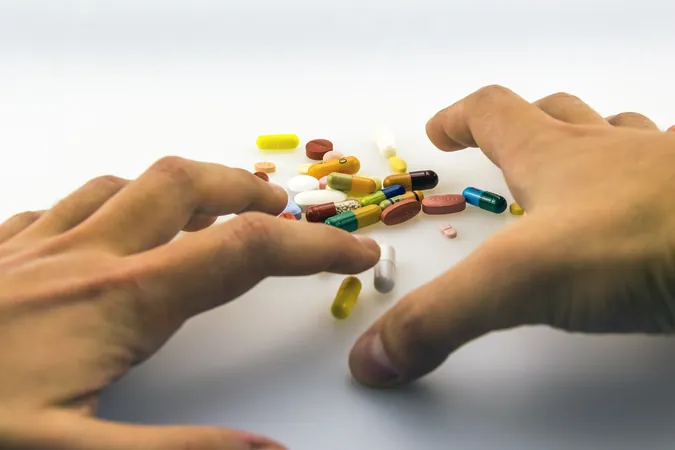
Youth at Risk: Polysubstance Overdoses Among Young People Skyrocket!
2025-08-25
Author: Mei
A Disturbing New Trend in Opioid Overdoses
While opioid overdoses have long been associated with adults aged 25 to 54, a groundbreaking study from Boston University School of Public Health reveals that youth are also falling victim to this crisis. This surge in polysubstance-related overdoses presents a troubling shift in the overdose landscape, emphasizing the urgent need for targeted intervention.
The Numbers Don't Lie: Alarmingly High Overdose Rates
Recent findings published in the journal *Pediatrics* highlight that opioid overdoses among young individuals increasingly involve multiple substances. Startlingly, as early as 15 years old, youth are experiencing overdose deaths linked to drugs like fentanyl, which was involved in over 93% of these fatalities. The study identifies stimulants such as methamphetamine and cocaine as significant contributors to the rise in polysubstance overdoses.
Why Is This Happening? A Perfect Storm for Young Lives
According to study leader Connor Buchholz, the data reveals that youth under 25 are facing overdose fatalities that mirror trends seen in the general adult population, signaling that the youth overdose crisis has entered a perilous new phase. Factors driving this alarming increase include greater access to potent illicit drugs, the prevalence of counterfeit medications laced with fentanyl, and escalating mental health issues spurred by the COVID-19 pandemic.
Staggering Statistics: The Impact on Our Youth
From 2020 to 2023, nearly half of the 23,000 youth opioid overdose deaths involved multiple substances. The statistics are sobering: 25% of opioid overdose deaths among 15-year-olds involved other drugs, climbing to 58% among 24-year-olds. With stimulant involvement rising sharply, now reaching 41% for those aged 24, the landscape of substance use among youth is shifting dramatically.
Funding Cuts Could Worsen the Crisis!
The situation may worsen as potential cuts to Medicaid threaten access to essential treatments for opioid use disorder. Healthcare professionals warn that these reductions jeopardize vital support services that young people rely on to combat addiction and reduce the risk of overdose.
Calls for Action: What Needs to Change?
To tackle this spiraling crisis, early intervention is essential. Experts are calling for increased education on overdose prevention, including widespread distribution of Narcan, an essential medication for reversing overdose effects. Treatment protocols must also adapt to include holistic strategies like behavioral therapies and contingency management adapted for young users.
Conclusion: A Crisis That Demands Urgent Attention!
As opioid-related overdoses among youth continue to rise, it is crucial for clinicians, policymakers, and communities to act decisively to protect our youngest populations. Addressing the interplay of substance use and mental health, alongside combating stigma, will be vital in reversing this dangerous trend and saving lives.
 Brasil (PT)
Brasil (PT)
 Canada (EN)
Canada (EN)
 Chile (ES)
Chile (ES)
 Česko (CS)
Česko (CS)
 대한민국 (KO)
대한민국 (KO)
 España (ES)
España (ES)
 France (FR)
France (FR)
 Hong Kong (EN)
Hong Kong (EN)
 Italia (IT)
Italia (IT)
 日本 (JA)
日本 (JA)
 Magyarország (HU)
Magyarország (HU)
 Norge (NO)
Norge (NO)
 Polska (PL)
Polska (PL)
 Schweiz (DE)
Schweiz (DE)
 Singapore (EN)
Singapore (EN)
 Sverige (SV)
Sverige (SV)
 Suomi (FI)
Suomi (FI)
 Türkiye (TR)
Türkiye (TR)
 الإمارات العربية المتحدة (AR)
الإمارات العربية المتحدة (AR)